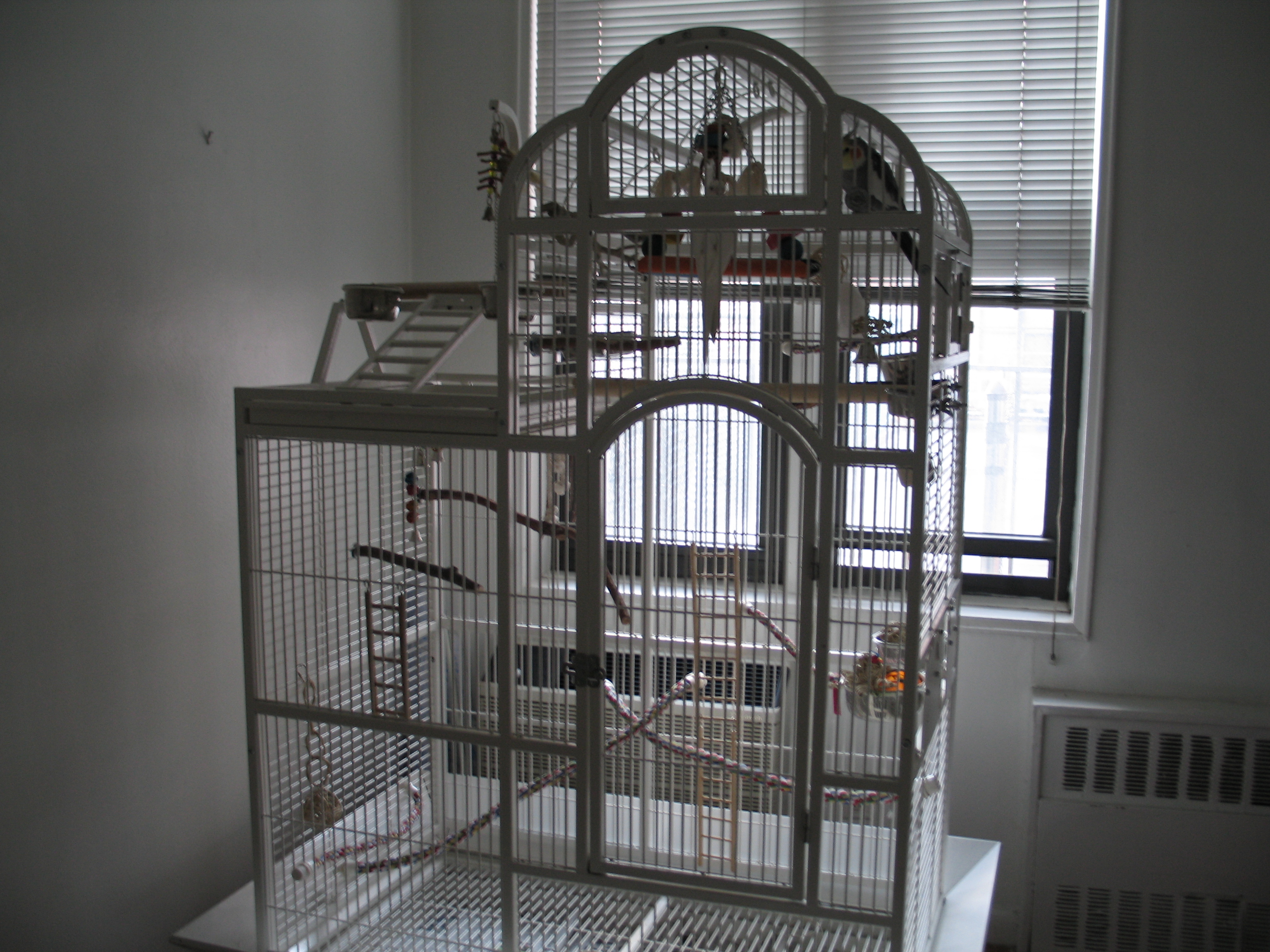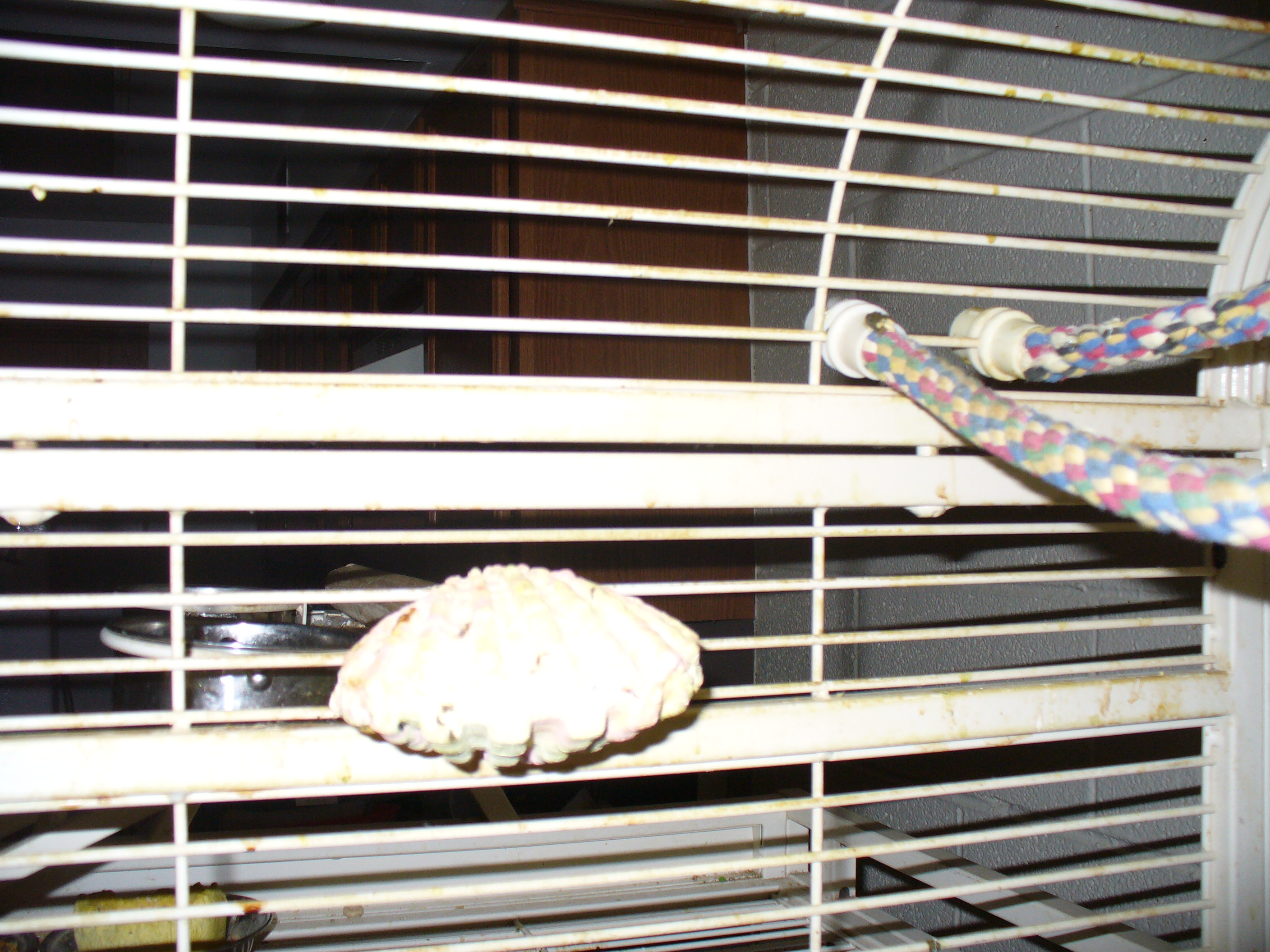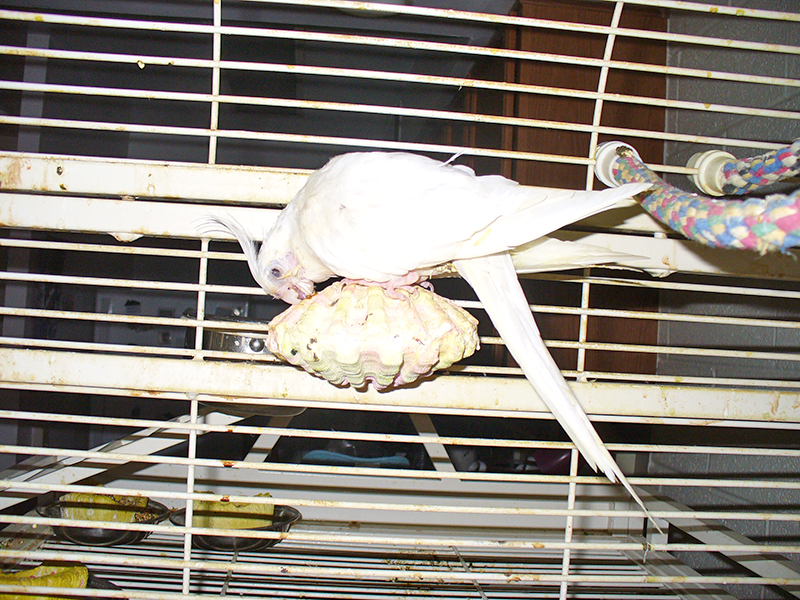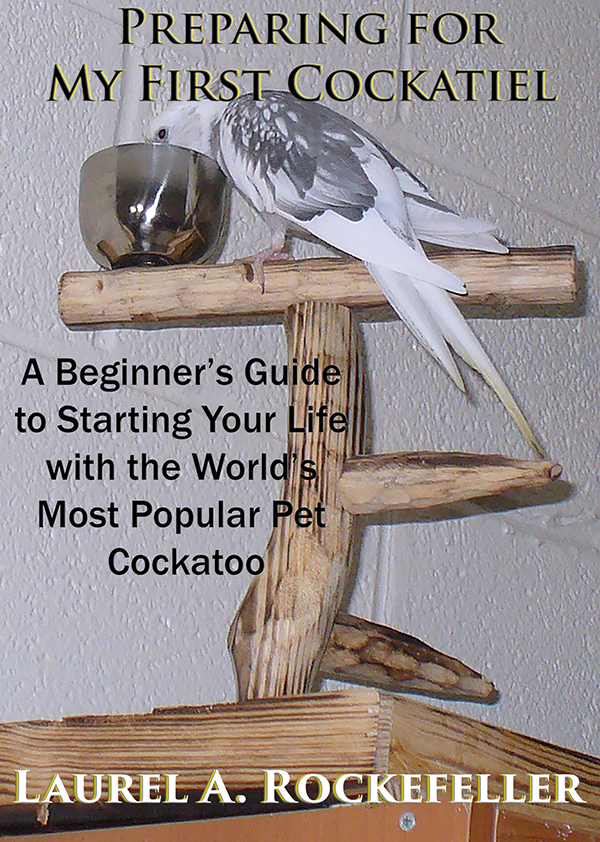
September 2006, Brooklyn New York.
Mithril sleeps on a swing hung from the top of her cage.
Sleep is important for all animals. Whether we have scales, fur, or feathers, getting enough sleep is essential for our health. So much so that every year furniture stores insist that only the most expensive mattresses, foundations, and bedding will make sure we sleep well. As people who live with and love animals, we appreciate that finding the best and most comfortable sleeping spaces for them can be a bit of a challenge. Making this more complicated, this changes as our birds age.
In 2005 when I first bought the main cage where Mithril and Arwen still sleep most nights, Mithril and Aragorn were happy to sleep on a swing placed in the center of the top dome of their cage (see above photo). It was triangular and made of three pine dowels. That was fine for a while – before they decided that pine was too hard on their feet. At which point I replaced the original swing with one made of the same kind of rope that you see towards the bottom of that photo.

Two parallel rope perches at the highest point in the cage help reduce conflicts between my two cockatiels.
By 2011 that sleeping space was no longer acceptable (see a trend here) and I installed regular rope perches about 12-16″ long and about half to a full inch thick. For a while, one was fine – until I observed too much fighting over where on that perch who would sleep where. Then I installed a second rope perch to reduce conflicts.

Mithril relaxes on a sundeck perch in 2020.
Meanwhile Mithril was taking her daytime naps on one of the many “sundecks” arranged around the cage.


In 2023 Mithril’s sight declined further. I removed all the wood perches from the feeding areas in favor of sundecks. At this point Mithril decided that the clam mineral block perch I installed several months before to mostly be a source of calcium for them was more stable and more secure than sitting on the rope sleeping perches, no doubt a conclusion that came after several falls from the rope perches. Every afternoon when she tells me she wants to go to bed I put her up on the lower of the rope perches (above left). From there she carefully climbs to the clam perch and settles down to relax and sleep (above right). It’s become her favorite spot now where she feels safest and where her arthritic toes can expand onto a flat surface.
Adapting to your bird(s) changing needs is very important, especially as your bird(s) gets older. Sleeping perches and perches in general are vital to sustaining your birds health. In this we have to pay careful attention to what each individual bird tells us she wants. As individuals we can be picky about where and on what/with what we sleep. Expect nothing different from you bird.
In figuring out what your bird wants and needs, pay careful attention to her behavior. Is she avoiding certain areas? Certain perches? When you offer a swing, how does she respond? Does she avoid swings or spend lots of time enjoying them throughout the day? Which perch materials does she favor during the day? Generally the type of perch she favors during the day is likely to be one she wants to sleep on.
Remember that safety is always foremost for your bird. She needs a sleeping space that is safe from potential danger (including other flock members), but also easy for her to reach and depart from as she wants. Most of the time this involves getting as high up as she can.
Wherever your bird decides to sleep, your careful attention to her needs will yield a happy and hopefully well-rested feathered friend ready to take on whatever each day brings.

![]()
For more information about cages and perches for cockatiels (and related medium sized parrots), please consult “Preparing for My First Cockatiel.” For more information about the changing needs of cockatiels over the age of ten years, please consult “Preparing for My Senior Cockatiel.”
Learn more about the Life with Cockatiels series on this blog.
